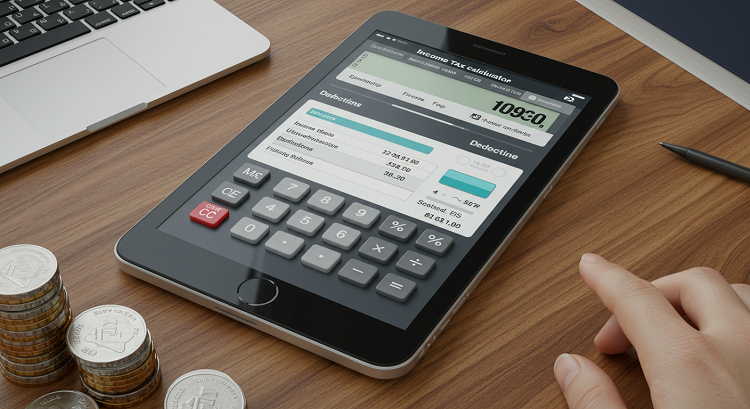Managing monthly expenses is easier when you know the exact amount that reaches your bank account after statutory deductions. Without that number, even the most careful planner risks overspending before the next payday. A salary calculator gives you that clarity within minutes, allowing you to budget with confidence rather than guesswork. Follow the process below and learn how understanding the parts of a payslip can sharpen your financial plan.
Table of Contents
Five Simple Steps to Calculate Your Salary
Here are the key steps that you will need to calculate your salary using a salary calculator:
1. Enter your basic details
Start with total earnings: core pay, HRA, bonuses, allowances, investment income and any freelance fees. Supplying every Rupee of income ensures the calculator begins with an accurate gross figure.
2. Input deductions and exemptions
If you follow the old tax regime, list eligible items such as life insurance premiums, employee provident fund, health policy payments or interest on a housing loan. The tool subtracts these numbers to reduce taxable income.
3. Review tax computation
The software applies the current assessment year’s rules and immediately shows the tax you owe. Check the figures to make sure no income line or deduction is missing.
4. View the results
You now see a clean split between tax, mandatory savings and the net amount you can actually spend. Use this snapshot to set realistic caps for bills, investments and discretionary purchases.
5. Choose the tax regime
Finally, toggle between old and new systems. The calculator displays both outcomes side by side so you can select the option that keeps more money in your pocket.
Understanding Your Pay Packet
Knowing what each payslip component does will improve the accuracy of any calculator and help you spot mistakes early.
- Basic salary: The foundation of your compensation, usually forty to sixty percent of the total cost to the company. All other elements are derived from it, and it is fully taxable.
- House rent allowance: Paid to offset rent. A portion may be exempt, depending on the actual rent and city category.
- Dearness allowance: Indexes pay to inflation, common in government roles and pensions. It is taxable.
- Special allowance: A filler amount that raises gross pay to the agreed package. It attracts full tax.
- Conveyance allowance: Eases daily travel costs. Amounts within the statutory ceiling enjoy partial tax relief.
- Medical allowance: Offered for routine health expenses. Reimbursements backed by bills can be tax-free up to the permissible limit.
- Provident fund: Twelve percent of basic salary is deducted and matched by the employer, building a retirement corpus that is tax-advantaged under certain conditions.
- Professional tax: A small state levy deducted at source; though minor, it affects take-home pay and must be included in calculations.
Bottom Line
Once you feed correct figures and select the suitable tax regime, the salary calculator becomes a powerful budgeting ally. It shows exactly how much cash is available for essentials, debt repayments and savings goals, helping you avoid overspending. Many reputable institutions, including IDFC FIRST Bank, provide free online calculators, including a salary calculator, income tax calculator and more, that you can revisit whenever your pay or investments change. Treat the tool as a monthly check-in, and you will stay on course toward stress-free finances. Use it to stay organised.

